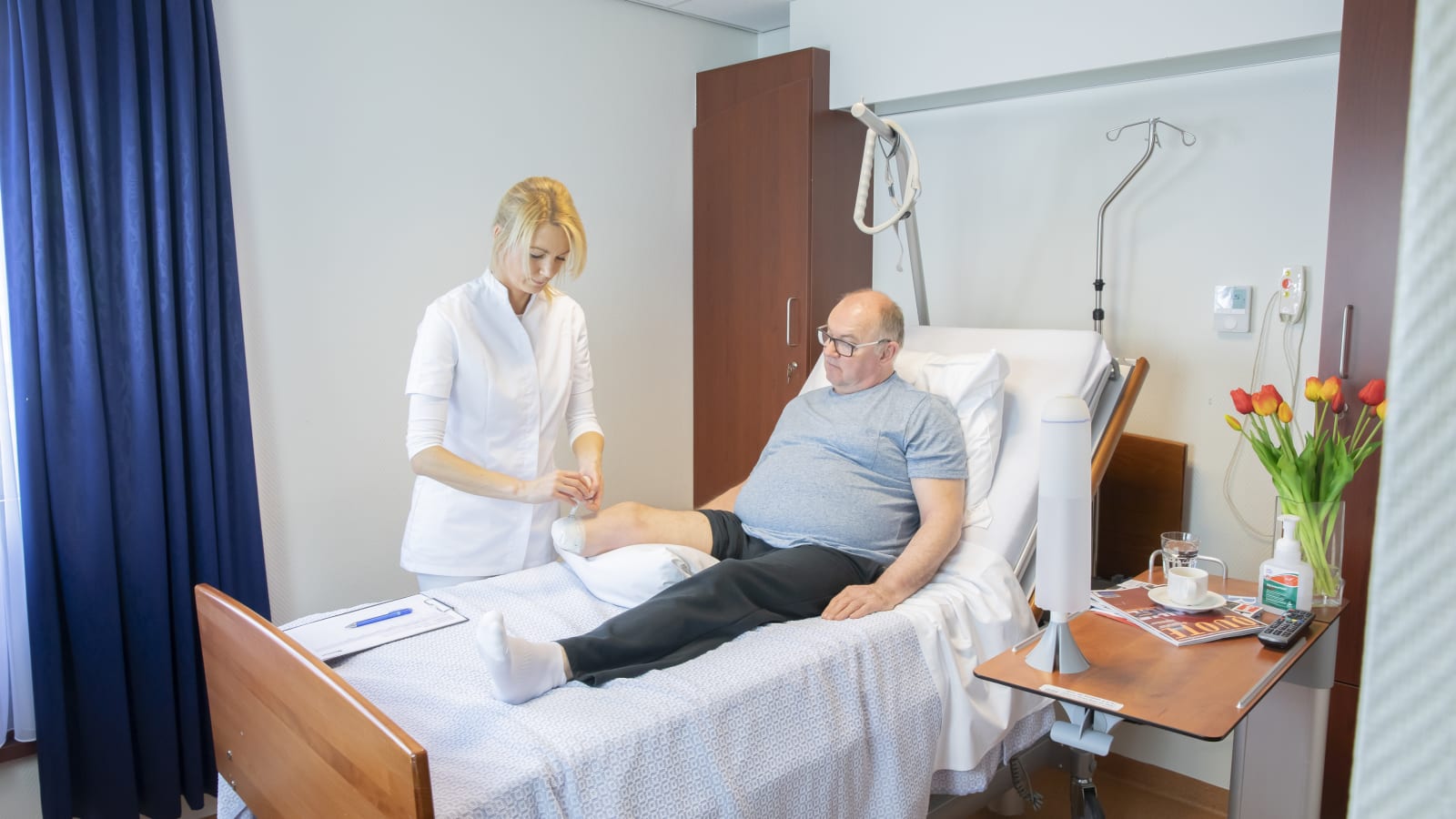Recovering from amputation surgery
A routine lower-limb amputation can broadly be divided into three phases: the Wound Healing Phase, the Mobilization Phase and the Reintegration Phase.
Please keep in mind that each person is unique, and treatment methods and timelines vary. The steps we describe here may not coincide exactly with your treatment pathway. Healing time after surgery varies, and the length of your recovery period depends on factors that might include the reason for your amputation, the type of amputation, your age, your overall health and the rehabilitation protocol prescribed by your medical team. While it is understandable that you will want to know how long after amputation you can be fit with a prosthetic, the timeline is not precise. Without any complications of amputation, an individual can typically be fit with their first prosthetic within three months.
Wound healing phase
Following amputation surgery, treatment typically focuses first on wound healing and pain management.
The goal is to achieve surgical healing without developing complications of amputation, such as a secondary infection or other issues. Your surgical team and the hospital staff will be actively involved in your care during this stage. We recommend that you speak with your wound care team about the benefits of having a removable rigid dressing after surgery. A removable rigid dressing has been proven to reduce pain, as well as diminish the risk of injury to your residual limb if you fall. It also has been shown to shorten wound healing time, which may help you progress through your rehabilitation with minimal delay.
Shaping of the residual limb
When the surgeon is satisfied with the wound healing, compression therapy can begin. A well-shaped, even and uniform limb will have a direct affect on the successful fitting of a prosthetic leg.
Compression therapy occurs in several ways. It may include using a shrinker sock, which is an elastic compression bandage pulled or wrapped over the residual limb. Other methods include utilizing a special silicone sleeve, called a post-operative silicone liner, which is worn over the residual limb. The goal in compression therapy is to further reduce the swelling while promoting blood circulation. Compression Therapy may be continued throughout Mobilization and early Rehabilitation to continue shaping of the residual limb. Your surgical team and prosthetist will work together to determine the correct compression therapy method for your situation.
Mobilization phase
As soon as your surgeon feels you’re ready, they may recommend specialized exercises and/or physical therapy. During this stage, your residual limb is probably still being shaped with compression therapy. You may experience some issues with balance and stamina, which, although frustrating, are normal during this stage.
You may find it difficult to sit up independently, transfer to a chair or move into a standing position. Your physical therapy team can provide instructions to ensure your safety while you work on developing these skills. Do not be afraid to ask for assistance from your team members.
When your doctor has determined that your wound has healed sufficiently, you will be discharged from hospital. Whether you return home directly or are transferred to a rehabilitation facility, you will continue your mobilization exercises until you are ready for the first fitting of a prosthetic leg.
A lot of BK’s are being discharged the next day, and some are even done outpatient now. We might want to factor that into our narrative.
Under the Self-care tips section, we offer some practical advice you may find helpful.
Reintegration phase
The goal of the reintegration phase is to restore your mobility and independence.
The length of your rehabilitation can depend on various factors, including but not limited to the cause of the amputation, the amputation level, your age, the type of rehabilitation program, and your physical condition.
Working with a collaborative team of experts can increase the quality of your care and significantly reduce the duration of your rehabilitation. Consulting with a prosthetist is a good place to start on the road to recovery. You will most likely also need help from other medical professionals, such as a physical therapist, a psychologist, an occupational therapist and perhaps even a dietitian.
